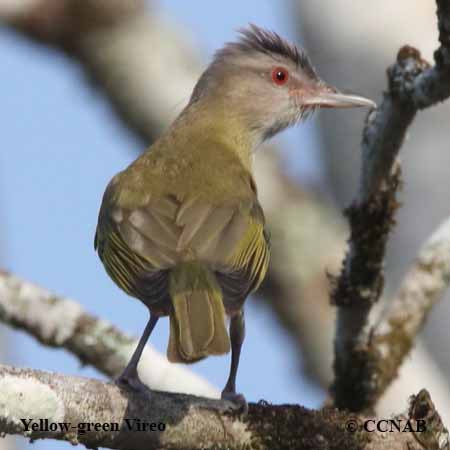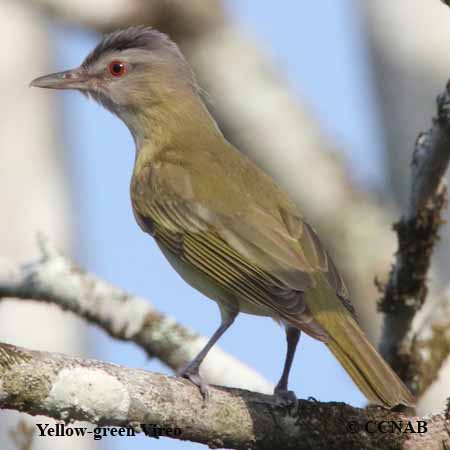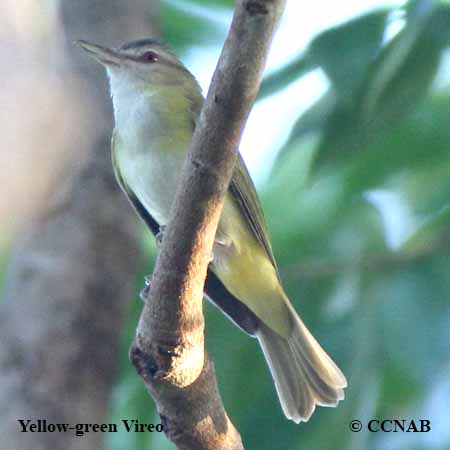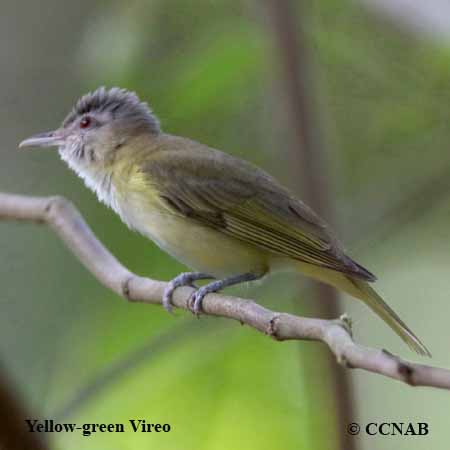North American Bird Search Box
This search box can be used to find bird species using bird's english, french or latin name, or to identify bird by its 4 letter Alpha Code
Field Guide for all the Birds of North America
Yellow-green Vireo
4 Letter (english names) Alpha Code: YGVI (3)
Viréo jaune-verdâtre
Vireo flavoviridis
Information, images and range maps on over 1,000 birds of North America, including sub-species, vagrants, introduced birds and possibilities
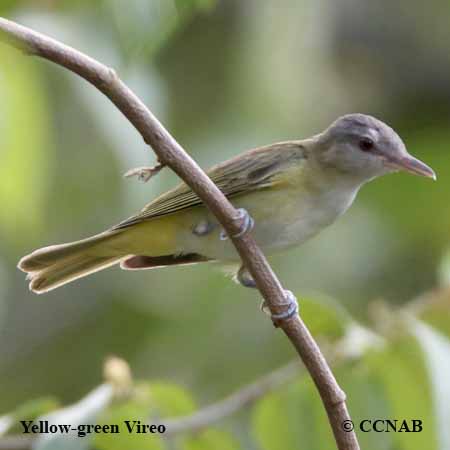
Species: The Yellow-green Vireo (Vireo flavoviridis) is a tropical vireo seen in Mexico and the Central and South America countries. It was once considered a race of the Red-eyed Vireo but has been separated for a number of years. It is typically seen every year in small numbers along the Rio Grande, in southeastern Texas. It prefers open forests, woodland edges and is most often seen in the upper portion of mature trees.
Distinctions: The male and female are very similar looking in appearance. It has a large bill with a visible hook at the end of the upper bill, same identifying features seen in other vireos. Quite similar to the Red-eyed Vireo, larger bill but with less defined facial markings, red iris, yellow under the tail, flanks, off-white breast and throat, greenish-yellow back and tail.
Voice: Nasal sounding, similar sounds to other vireo types, multiple call notes, similar to the Red-eyed Vireo. Prefers staying high in tree when singing and in its search for insects.
Nesting: Three to five white eggs, speckled with brown or black spots. Suspended from a fork in branches of trees. The nest is composed of strips of wood bark, plant fibres and lined with fine grasses and spiderwebs.

Life, Habitat & Pictures of North American Vireos
| B L | W W | W | Family | Latin Name |
|---|---|---|---|---|
| 6.25" 15.9cm | 10" 25.4cm | 0.63oz 17.8g | Vireonidae | Vireo flavoviridis |
- Summer
- Year Around
- Winter
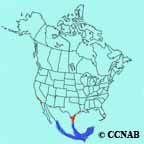
Distribution: Mainly seen in the southern regions of Mexico, Central America and the northern regions of South America. It is considered a vagrant, when seen north of the Rio Grande. There is a possibility that it is nesting in Texas. The states of Florida, Texas, New Mexico, Arizona and California also report seeing this bird.
Reference to Other Bird Site:
ABA - American Birding Association This site represents an organization that maintains official records of all birds species that have been proven to have been seen inside the perimeters of the North American Continent and the surrounding bodies of water. Regular revised versions are posted to keep the bird list current at all times. This is the list used by all serious birders over their lifetime. You may be aware of the movie called the "Big Year". It was with this list that all the competing birders used in an attempt to set a new record as to how many bird species that could be seen by an individual birder in one calendar year.
